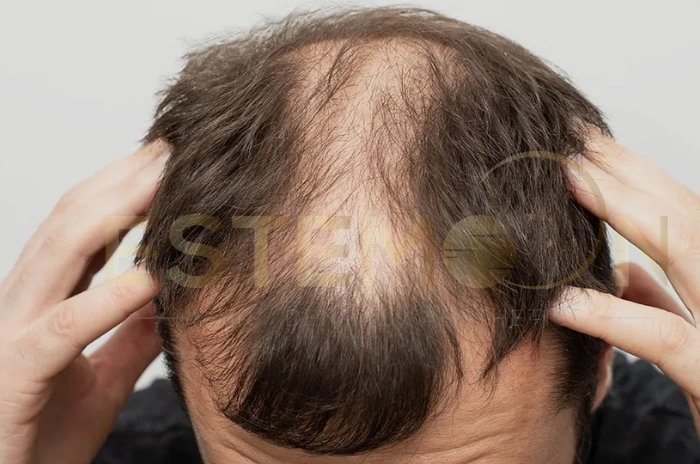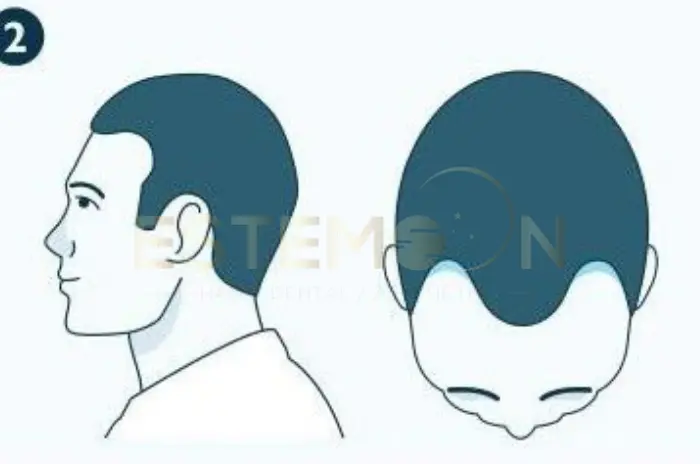Dutasteride has emerged as a powerful treatment option for androgenetic alopecia, offering enhanced DHT suppression compared to traditional hair loss medications. Originally developed for treating benign prostatic hyperplasia, this dual 5-alpha reductase inhibitor has gained attention for its superior efficacy in combating male pattern baldness.
As hair loss treatments continue to evolve, dutasteride represents a significant advancement in addressing the hormonal root causes of androgenetic alopecia. Its comprehensive DHT blocking capabilities make it an attractive option for men seeking more aggressive intervention against progressive hair loss.

Dutasteride vs finasteride which is stronger
Dutasteride demonstrates superior pharmacological potency compared to finasteride due to its dual 5-alpha reductase inhibition mechanism. Clinical studies consistently show greater DHT suppression and potentially improved hair loss outcomes with dutasteride treatment.
While finasteride selectively inhibits Type II 5-alpha reductase, dutasteride blocks both Type I and Type II enzymes. This broader inhibition results in more comprehensive DHT reduction throughout the body.
Comparative Analysis:
| Aspect | Dutasteride | Finasteride | Advantage |
|---|---|---|---|
| DHT reduction | 90-95% | 65-70% | Dutasteride |
| Hair count increase | 15-25% | 10-15% | Dutasteride |
| Response rate | 85-90% | 75-80% | Dutasteride |
| Side effect frequency | 10-15% | 5-10% | Finasteride |
Dutasteride often benefits finasteride non-responders, with studies showing that 50-70% of men who don’t respond to finasteride experience improvement when switching to dutasteride.
Large-scale studies comparing dutasteride 0.5mg to finasteride 1mg consistently show 20-30% greater improvement in hair count with dutasteride. The difference becomes more pronounced in men with more advanced hair loss patterns.
How well dutasteride works for hair loss
Clinical evidence demonstrates that dutasteride is highly effective for treating androgenetic alopecia, with superior outcomes compared to finasteride in most comparative studies. The medication’s dual enzyme inhibition translates to measurable improvements in hair density and thickness.
Large-scale studies show consistent efficacy across different populations and hair loss patterns. The most significant improvements typically occur in the crown and vertex areas, with moderate benefits observed at the frontal hairline.
Efficacy Results:
- Hair count increases of 15-25% compared to baseline
- Response rate of 85-90% (any improvement)
- Significant response rate of 60-70% (marked improvement)
- Maintenance of existing hair in 95%+ of users
Response Timeline:
| Time Period | Expected Changes | Response Rate |
|---|---|---|
| 0-3 months | Reduced shedding | 60-70% |
| 3-6 months | Early regrowth signs | 70-80% |
| 6-12 months | Visible improvement | 80-85% |
| 12-24 months | Maximum benefit | 85-90% |
Age plays a significant role in treatment response, with younger men typically achieving better outcomes. Hair loss duration also impacts results, as early intervention generally produces superior outcomes.
Studies extending beyond two years show that dutasteride maintains its efficacy over time, with many patients experiencing continued improvement or stable hair density.
What to Expect From Dutasteride Treatment for Hair Growth
Understanding realistic timelines and expectations for dutasteride treatment helps patients maintain motivation and make informed decisions. The medication requires patience, as significant visible improvements typically take 6-12 months to become apparent.
The first noticeable change is usually reduced hair shedding during washing and styling. Some patients experience temporary increased shedding as miniaturized hairs are replaced by healthier growth.
Treatment Milestones:
| Month | Typical Observations |
|---|---|
| 1-3 | Reduced shedding, possible initial shed |
| 3-6 | Early regrowth as fine, short hairs |
| 6-9 | Visible improvement in density |
| 9-12 | Near-maximum benefit achieved |
New hair growth begins appearing as fine, short hairs that gradually thicken over time. More substantial changes become apparent during the 6-12 month period, with increased hair density and improved coverage.
Most patients achieve stabilization of hair loss with varying degrees of regrowth. Complete restoration to original density is uncommon, but meaningful improvement in appearance is achievable for most responsive patients.
Adding topical minoxidil to dutasteride treatment often enhances results through complementary mechanisms. Dutasteride requires indefinite use to maintain benefits, as discontinuation typically results in gradual return to baseline hair loss patterns.
Who should not use dutasteride key precautions
Certain individuals should avoid dutasteride due to medical contraindications or increased risk of adverse effects. Understanding these precautions ensures safe and appropriate use of this medication.
Women of childbearing potential should never use dutasteride due to severe teratogenic risks. The medication can cause abnormal development of male fetal genitalia if exposure occurs during pregnancy.
Medical Contraindications:
- Active prostate cancer or suspicion of malignancy
- Severe liver impairment or hepatic disease
- Hypersensitivity to dutasteride or finasteride
- Women who are pregnant, breastfeeding, or planning pregnancy
Risk Factors Requiring Caution:
| Condition | Risk Level | Monitoring Required |
|---|---|---|
| Depression/anxiety history | Moderate | Regular psychiatric assessment |
| Sexual dysfunction | Moderate | Baseline and ongoing evaluation |
| Liver disease | High | Liver function monitoring |
| Age over 65 | Moderate | Careful benefit-risk assessment |
Dutasteride has relatively few significant drug interactions, but certain medications may affect its metabolism. Regular follow-up appointments allow for assessment of treatment response and early detection of adverse effects.
Thorough patient education about potential side effects, treatment duration, and realistic expectations is essential before starting dutasteride. Patients should understand the long-term commitment required and potential consequences of discontinuation.

What dutasteride is and how it works
Dutasteride is a dual 5-alpha reductase inhibitor that blocks both Type I and Type II enzymes responsible for converting testosterone to dihydrotestosterone (DHT). Unlike finasteride, which only inhibits Type II 5-alpha reductase, dutasteride provides more comprehensive DHT suppression throughout the body.
The medication was originally approved for treating benign prostatic hyperplasia but is prescribed off-label for hair loss. While not FDA-approved specifically for androgenetic alopecia in the United States, it has gained approval for this indication in several other countries.
DHT Suppression Comparison:
| Medication | Type I Inhibition | Type II Inhibition | Overall DHT Reduction |
|---|---|---|---|
| Dutasteride | Yes | Yes | 90-95% |
| Finasteride | No | Yes | 65-70% |
DHT is the primary hormone responsible for androgenetic alopecia, causing progressive miniaturization of genetically susceptible hair follicles. By blocking both forms of 5-alpha reductase, dutasteride reduces DHT levels more effectively than single-enzyme inhibitors.
Dutasteride has a significantly longer half-life than finasteride, remaining active in the body for approximately 4-6 weeks after discontinuation. The standard dose for hair loss treatment is 0.5mg daily, taken orally with consistent timing for optimal results.
Potential Side Effects of Using Dutasteride for Hair Loss
While dutasteride offers superior DHT blocking capabilities, its comprehensive hormone suppression can lead to various side effects. Understanding these potential risks is crucial for making informed treatment decisions.
The most commonly reported side effects relate to sexual function, occurring in approximately 5-15% of users. These effects are generally dose-dependent and may resolve with continued use or upon discontinuation.
Common Side Effects:
- Decreased libido (8-12% of users)
- Erectile dysfunction (5-9%)
- Decreased ejaculate volume (15-20%)
- Gynecomastia or breast enlargement (2-5%)
- Mood changes or depression (3-7%)
Side Effect Timeline:
| Side Effect | Typical Onset | Reversibility |
|---|---|---|
| Decreased libido | 2-6 months | Usually reversible |
| Erectile dysfunction | 1-4 months | Usually reversible |
| Reduced ejaculate | 1-2 months | Usually reversible |
| Mood changes | Variable | Usually reversible |
Some studies suggest potential links between 5-alpha reductase inhibitors and increased risk of high-grade prostate cancer, though this remains controversial. Regular follow-up with healthcare providers allows for early detection and management of side effects.
Intermediary organizations emphasize the importance of thorough patient counseling about potential side effects before initiating dutasteride therapy, ensuring informed consent and proper expectation management.
Is Dutasteride the Right Choice for Your Hair Loss
Determining whether dutasteride is appropriate requires comprehensive evaluation of hair loss pattern, previous treatment response, age, and risk tolerance. Not all candidates are suitable for this potent DHT inhibitor.
Men with aggressive androgenetic alopecia who have not responded adequately to finasteride represent prime candidates for dutasteride therapy. Those experiencing rapid progression despite conventional treatment may benefit from the enhanced DHT suppression.
Ideal Candidate Criteria:
- Confirmed androgenetic alopecia diagnosis
- Age typically 25-50 years
- Inadequate response to finasteride after 12+ months
- Aggressive hair loss progression
- Acceptable risk tolerance for potential side effects
Patient Selection Factors:
| Factor | Favorable | Unfavorable |
|---|---|---|
| Age | 25-50 years | Under 21 or over 65 |
| Hair loss pattern | Norwood 3-6 | Norwood 1-2 or 7 |
| Previous treatment | Finasteride non-responder | Treatment naive |
| Sexual health | No baseline issues | Pre-existing dysfunction |
Dutasteride is contraindicated in women of childbearing potential due to teratogenic risks. Men with prostate cancer, liver disease, or hypersensitivity to 5-alpha reductase inhibitors should avoid this medication.
The choice to use dutasteride should involve thorough discussion between patient and physician, weighing potential benefits against risks.
FAQ
What is dutasteride and how does it work?
Dutasteride is a dual 5-alpha reductase inhibitor that blocks both Type I and Type II enzymes responsible for converting testosterone to DHT. This provides more comprehensive DHT suppression (90-95%) compared to finasteride’s 65-70% reduction, helping prevent hair follicle miniaturization and stimulating regrowth in many patients with androgenetic alopecia.
What are the most common side effects of dutasteride?
Common side effects include decreased libido (8-12%), erectile dysfunction (5-9%), reduced ejaculate volume (15-20%), and potential breast enlargement (2-5%). Most side effects are reversible upon discontinuation, though dutasteride’s long half-life means effects may persist for 4-6 weeks after stopping.
Is dutasteride more effective than finasteride for hair loss?
Yes, clinical studies show dutasteride produces 20-30% greater improvement in hair count compared to finasteride. It’s particularly beneficial for finasteride non-responders, with 50-70% experiencing improvement when switching to dutasteride, though this enhanced effectiveness comes with potentially increased side effect risks.
How long does it take for dutasteride to work?
Dutasteride typically requires 6-12 months to show visible improvement. Initial effects include reduced shedding within 0-3 months, early regrowth signs at 3-6 months, visible improvement at 6-12 months, and maximum benefits around 12-24 months of consistent use.
Follow us on social media for updates, tips, and patient success stories:




